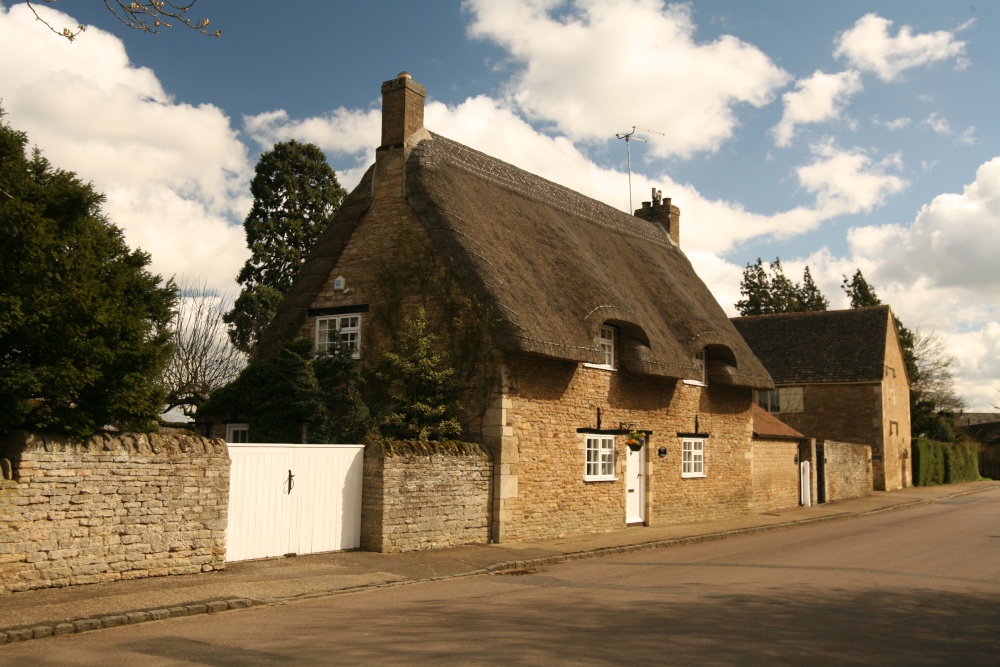 |
Fotheringhay Cottage , Main Street, Fotheringhay . As the castle sank into obscurity, so the village declined with it. In 1524, there were about 100 families living in Fotheringhay. By 1673, after the castle had gone, this had dropped to 67, and by 1801, there were only 57. In more recent years, that figure fell to just 40 households. By 1902, even the church itself was almost derelict, but a campaign to restore this important example of Perpendicular religious architecture, led by the Bishop of Peterborough, saved it by raising £5000. At the time of the 2001 census, the parish's population was 123 people This picture appears in the following picture tours: Camera Make: Canon� Model: Canon EOS 5D� |
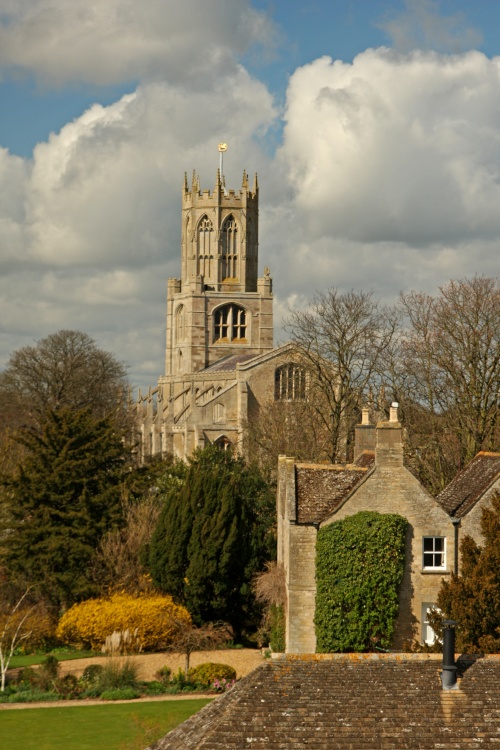 |
Fotheringhay St Mary and All Saints Church - view from castle site . Church is no longer as large as it would have been when Richard III was last known to have visited. In 1476, as duke of Gloucester, he led the cortege that brought the bodies of his father, Richard, Duke of York, and elder brother, Edmund, Earl of Rutland, for reburial in the family mausoleum. At that time, the church extended further east and there was a college and cloister attached on the south, between it and the River Nene. This picture appears in the following picture tours: Camera Make: Canon� Model: Canon EOS 40D� |
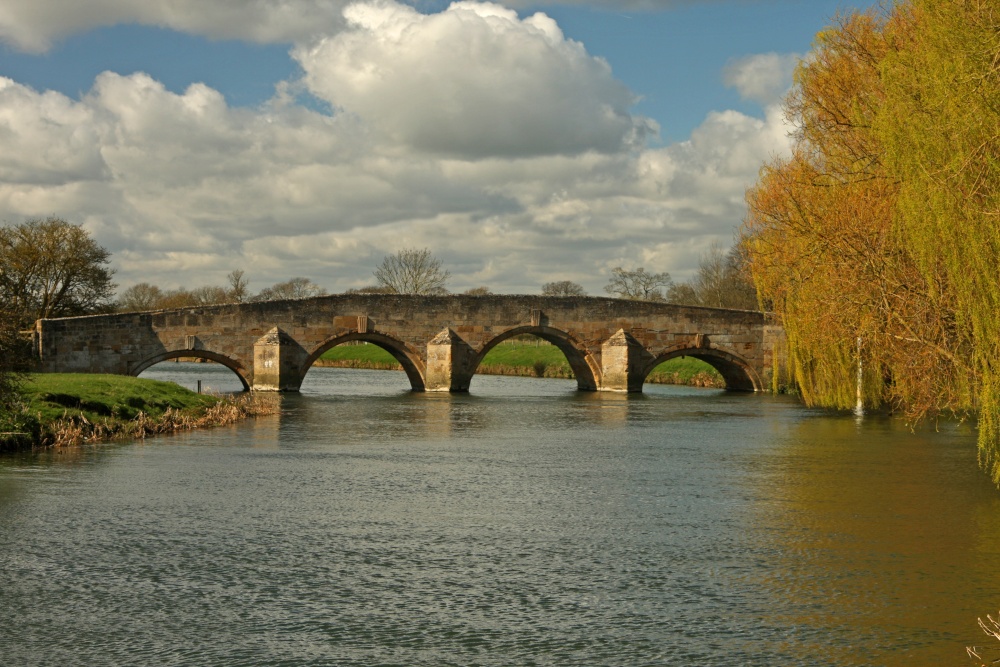 |
Fotheringhay Old stone bridge across the river Nene, which was the reason for Fotheringhay’s existence (Simon de Senlis, built the first wooden castle there, around 1100, to control the river crossing on a now lost main road from London to Stamford. ) After death of Richard III Fotheringhay also became Tudor property as well, after the death of Cecily, the Duchess of York, in 1497. Henry VII gave it to his wife, Elizabeth of York, and his successor Henry VIII also bestowed it on each of his six wives, taking it back each time he divorced or executed them (although number three and Jane Seymour did die of natural causes after giving birth to the future Edward VI). His first wife, Catherine of Aragon, spent a considerable amount of money on improving the castle, which had declined considerably after the end of the Plantagenets. The king himself probably visited the castle, with fifth wife Catherine Howard, in 1541 while travelling north to avoid the plague in London.Ownership of the castle passed to James I when he united England and Scotland after Elizabeth’s demise, in 1603. But he must have had little taste for the place that had seen such tragedy for his mother. By 1635, it was deserted and going to ruin, not long afterwards it was demolished altogether. Popular legend has it that James ordered its destruction as an act of revenge . This picture appears in the following picture tours: Camera Make: Canon� Model: Canon EOS 40D� |
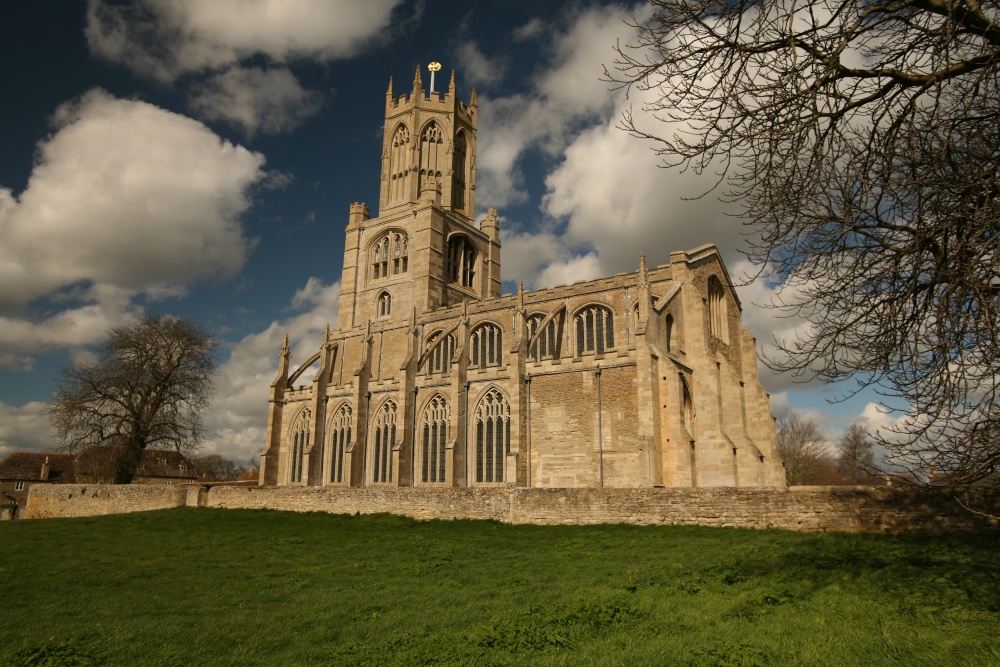 |
Fotheringhay St Mary and All Saints Church . In the medieval period church was twice its present size , but has been altered over the years, and now is much shorter . However, it is still a wonderful with its superb octagonal lantern tower. This picture appears in the following picture tours: Camera Make: Canon� Model: Canon EOS 5D� |
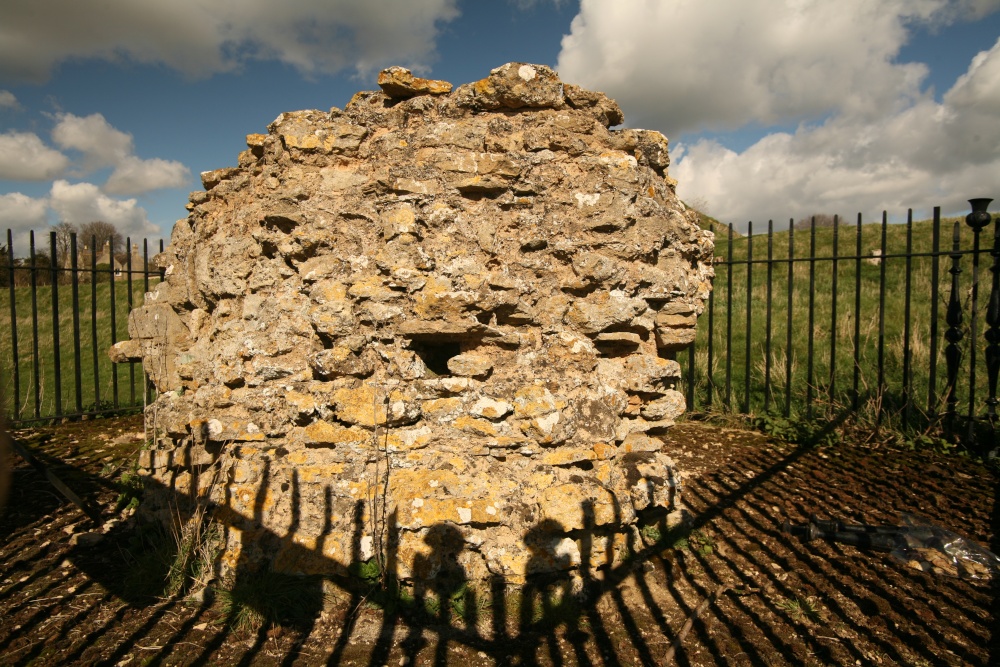 |
Fotheringhay Masonry remains of Fotheringhay Castle . Execution of Mary, Queen of Scots alone would cement Fotheringhay’s place in the history of Britain, but it is only one part of its political significance. Hundreds of years earlier, it was a place of major national importance, practically the Windsor of its day, as the stronghold of the House of Plantagenet. This was the dynasty that ruled England from 1154 to 1485. It spawned a total of 15 kings, starting with Henry II and ending with Richard III ( born at Fotheringhay Castle on October 2, 1452.) This picture appears in the following picture tours: Camera Make: Canon� Model: Canon EOS 5D� |
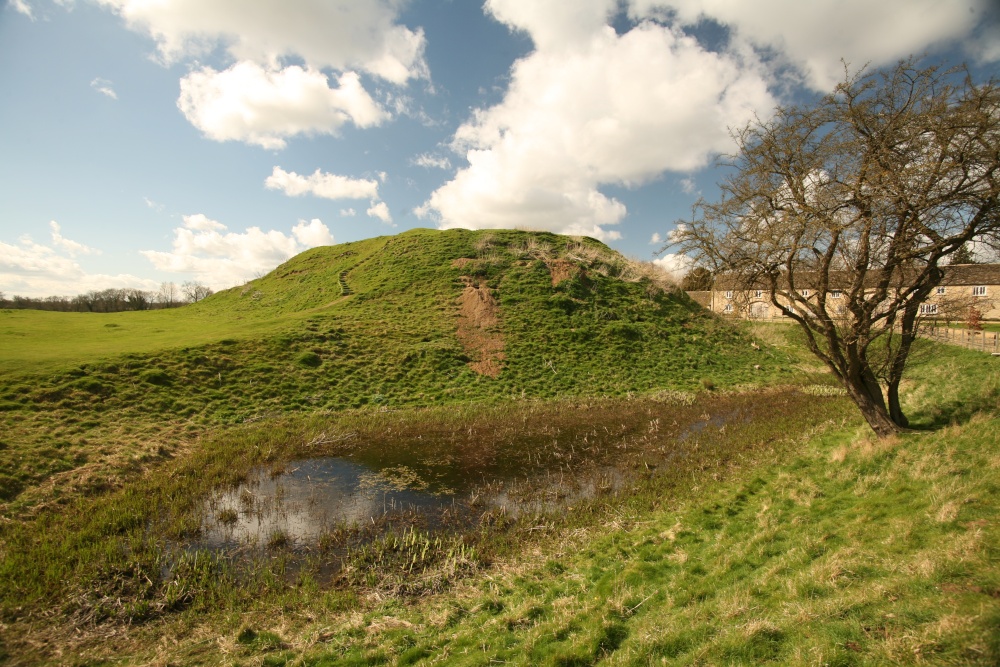 |
Fotheringhay Fotheringhay is a village and civil parish in Northamptonshire . It is most noted for being the site of Fotheringhay (or Fotheringay) Castle which was razed in 1627. There is nothing left of the castle to be seen today other than the motte on which it was built that provides excellent views of the River Nene.On February 8, 1587, an event that forever changed the course of this country’s history took place. Mary, Queen of Scots, a cousin of and rival to Queen Elizabeth I for the English throne, was beheaded after 19 years in custody . The power play between Elizabeth and Mary is infamous. Less well-known though is that its finale was acted out in what is now a very quiet, tiny and unassuming village just a few miles to the south west of Peterborough. The Queen of Scots spent the final months of her life at Fotheringhay, in the impassive motte-and-bailey castle that once stood there beside the River Nene. Months later, her coffin was taken by torchlight procession to Peterborough Cathedral where it was entombed until King James I had her moved to Westminster Abbey in 1612. Her grave there is, incongruously, just 30 feet away from Queen Elizabeth’s. This picture appears in the following picture tours: Camera Make: Canon� Model: Canon EOS 5D� |
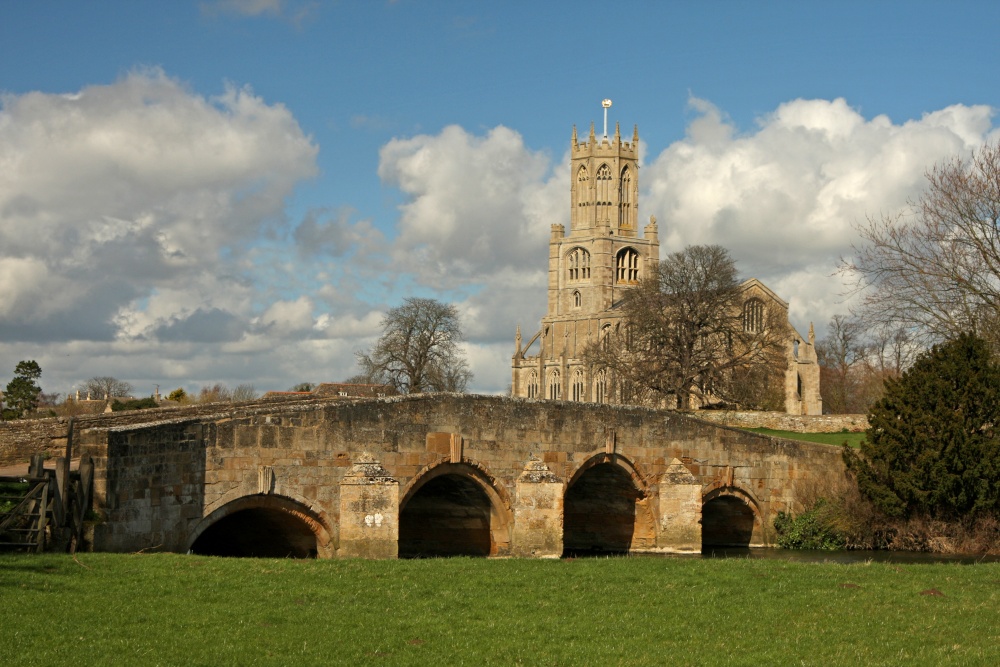 |
Fotheringhay View of Fotheringhay Bridge with St Mary and All Saints Church in the background . The village was visited by Queen Elizabeth I in 1573, who was shocked to see the desecrated tombs of her Royal ancestors amid the wrecked remains of the collegiate church. She ordered that they be reinterred inside the parish church, with twin monuments erected on the eastern wall. She also arranged for the local schoolmaster to be paid a salary of £20 per annum and commanded the decrepit old wooden bridge across the River Nene, adjacent to the castle, to be replaced. It had been noted as long before as 1330 that it was ‘broken so that hardly any winter passes without danger of death in passing there.’ Elizabeth’s one was much stronger, with stone piers and wooden decking. However, the inscription that accompanied it, proclaiming ‘God Save the Queen’ was obliterated by Cromwell’s Parliamentarian troops during the civil war of 1642 to 1651. Elizabeth’s bridge survived until 1722, when it was rebuilt completely in stone. This remains in use today. This picture appears in the following picture tours: Camera Make: Canon� Model: Canon EOS 40D� 1 person has added this picture to their favourites |